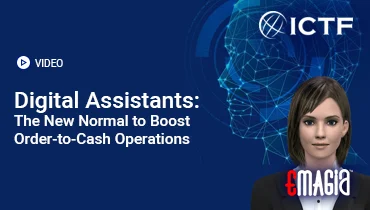Introduction to Bad Debt Expense
In the realm of accounting, bad debt expense represents the portion of receivables that a company does not expect to collect. This expense arises when customers fail to fulfill their payment obligations, impacting a company’s financial statements and cash flow. Understanding how to compute bad debt expense is crucial for accurate financial reporting and effective credit management.
Understanding Bad Debt Expense
What Constitutes Bad Debt?
Bad debt refers to amounts owed by customers that are deemed uncollectible. This situation typically arises when customers face financial difficulties, disputes, or bankruptcy, rendering them unable to pay their outstanding debts.
Importance of Accounting for Bad Debt
Accurately accounting for bad debt ensures that a company’s financial statements reflect a realistic view of its financial position. It also aids in assessing the effectiveness of credit policies and identifying areas for improvement in credit management.
Methods to Compute Bad Debt Expense
Direct Write-Off Method
The direct write-off method involves recognizing bad debt expense only when specific accounts are identified as uncollectible.
Pros:
- Simplicity in implementation.
- Reflects actual uncollectible amounts.
Cons:
- Violates the matching principle in accounting.
- Can distort financial statements if bad debts are recognized in periods different from when the related sales occurred.
Example:
If a company determines that a $5,000 receivable is uncollectible, it would record:
- Debit: Bad Debt Expense $5,000
- Credit: Accounts Receivable $5,000
Allowance Method
The allowance method estimates bad debt expense in advance, aligning with the matching principle by recognizing expenses in the same period as the related revenues. This method involves creating an allowance for doubtful accounts to anticipate potential uncollectible receivables.
Approaches within the Allowance Method:
Percentage of Sales Method
This approach estimates bad debt expense as a fixed percentage of total credit sales, based on historical data.
Example:
If a company has $1,000,000 in credit sales and estimates that 2% will be uncollectible:
- Bad Debt Expense = $1,000,000 × 2% = $20,000
Accounts Receivable Aging Method
This method categorizes accounts receivable based on the length of time outstanding and applies different uncollectibility percentages to each category.
Example:
A company has the following receivables:
- 0-30 days: $50,000 at 1% uncollectible = $500
- 31-60 days: $30,000 at 5% uncollectible = $1,500
- 61-90 days: $15,000 at 10% uncollectible = $1,500
- Over 90 days: $5,000 at 25% uncollectible = $1,250
Total estimated uncollectible: $4,750
Factors Influencing Bad Debt Expense
Credit Policies
The stringency of a company’s credit policies directly affects the likelihood of incurring bad debts. Lax credit standards may lead to higher sales but increase the risk of uncollectible accounts.
Economic Conditions
Economic downturns can lead to increased customer defaults, thereby elevating bad debt expenses. Monitoring economic indicators helps in adjusting credit policies proactively.
Industry Practices
Different industries have varying norms regarding credit terms and customer payment behaviors. Understanding industry-specific risks aids in accurately estimating bad debt expenses.
Strategies to Minimize Bad Debt Expense
Implementing Robust Credit Evaluation
Conducting thorough credit checks and setting appropriate credit limits can reduce the risk of customer defaults.
Regular Monitoring of Accounts Receivable
Consistent review of outstanding receivables helps in early identification of potential bad debts, allowing for timely intervention.
Offering Multiple Payment Options
Providing customers with various payment methods can facilitate timely payments and reduce the incidence of bad debts.
Utilizing Collection Agencies
Engaging third-party collection agencies can be effective in recovering overdue accounts, especially when internal efforts have been exhausted.
How Emagia Enhances Bad Debt Management
Emagia offers advanced solutions for managing accounts receivable and minimizing bad debt expenses. By leveraging artificial intelligence and automation, Emagia provides:
- Predictive analytics for identifying high-risk accounts.
- Automated dunning processes to ensure timely follow-ups.
- Comprehensive reporting tools for monitoring receivables.
These features enable businesses to proactively manage credit risks and maintain healthy cash flows.
Frequently Asked Questions
What is the difference between the direct write-off and allowance methods?
The direct write-off method records bad debt expense only when specific accounts are deemed uncollectible, potentially violating the matching principle. In contrast, the allowance method estimates bad debts in advance, aligning expenses with related revenues.
How often should bad debt estimates be reviewed?
Bad debt estimates should be reviewed regularly, at least quarterly, to ensure they reflect current economic conditions and customer payment behaviors.
Can bad debt expense be recovered?
If a customer pays after a debt has been written off, the amount recovered should be recorded as income in the period it is received.
Is bad debt expense tax-deductible?
Yes, bad debt expense is generally tax-deductible, but specific regulations may vary by jurisdiction.
How does bad debt expense affect financial statements?
Bad debt expense reduces net income on the income statement and decreases accounts receivable on the balance sheet through the allowance for doubtful accounts.
Conclusion
Effectively computing and managing bad debt expense is vital for maintaining accurate financial records and ensuring the financial health of a business. By understanding the methods of calculation, factors influencing bad debts, and strategies for mitigation, companies can better navigate the challenges associated with uncollectible accounts. Leveraging tools like Emagia further enhances the ability to manage receivables proactively and maintain robust cash flows.



